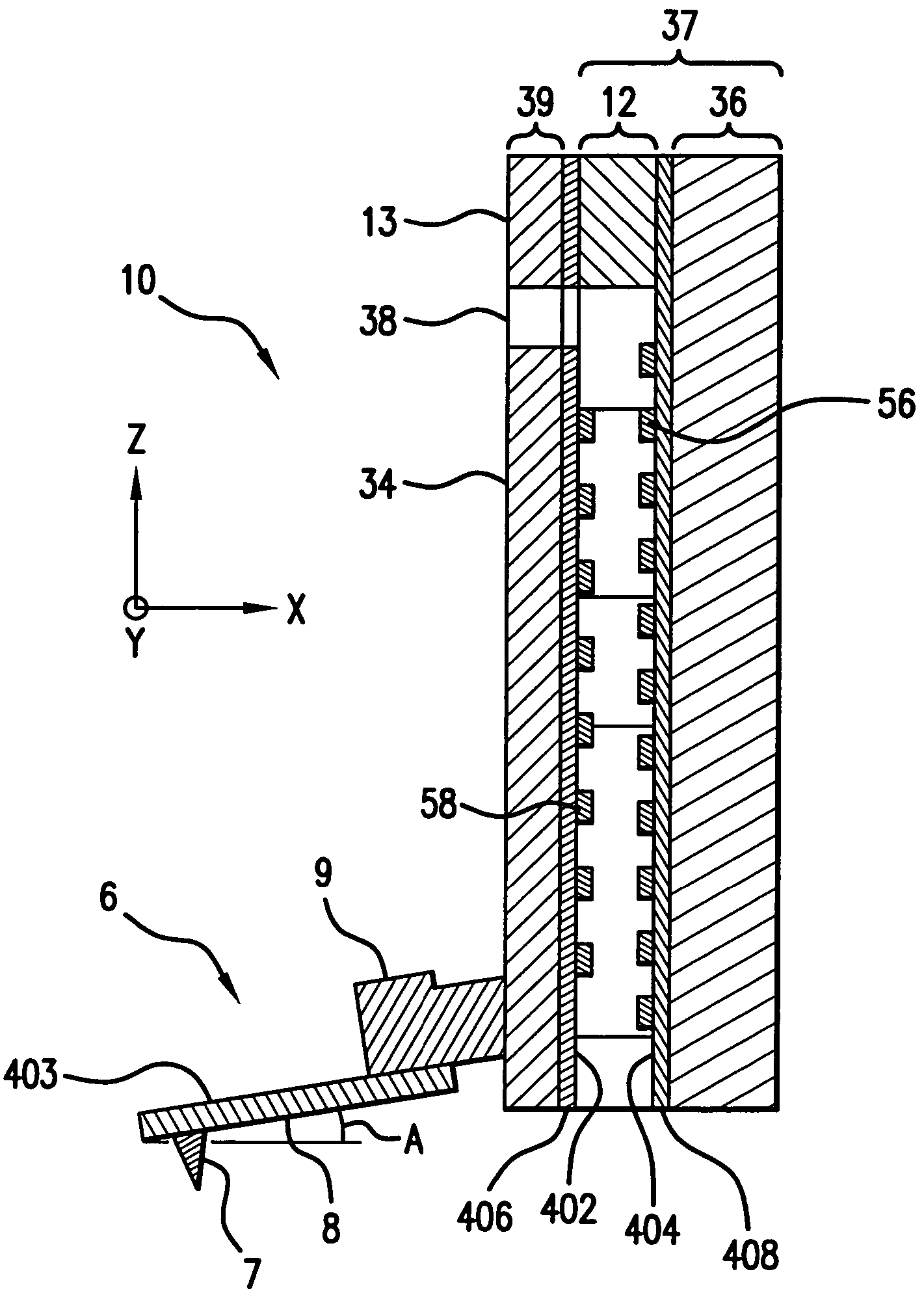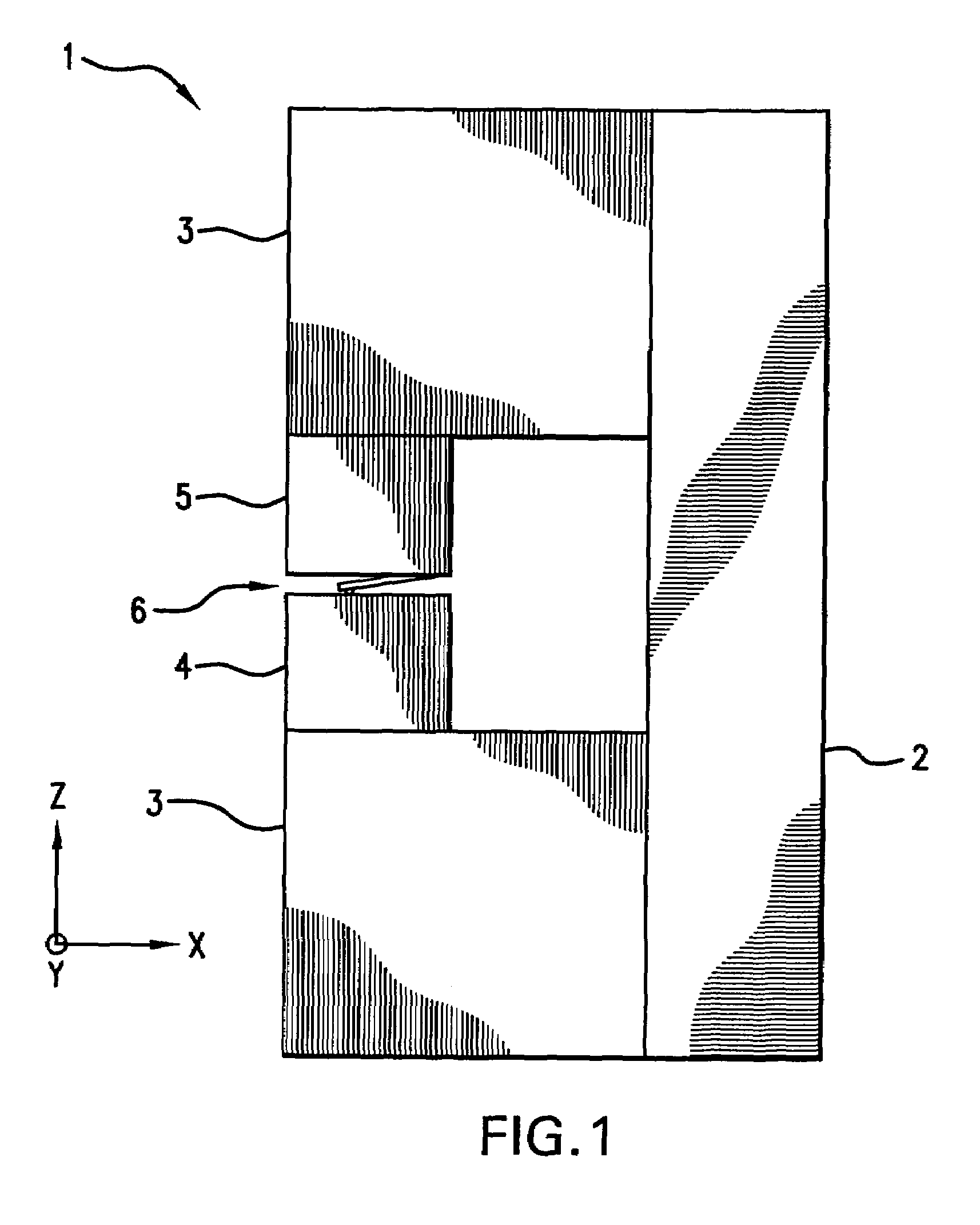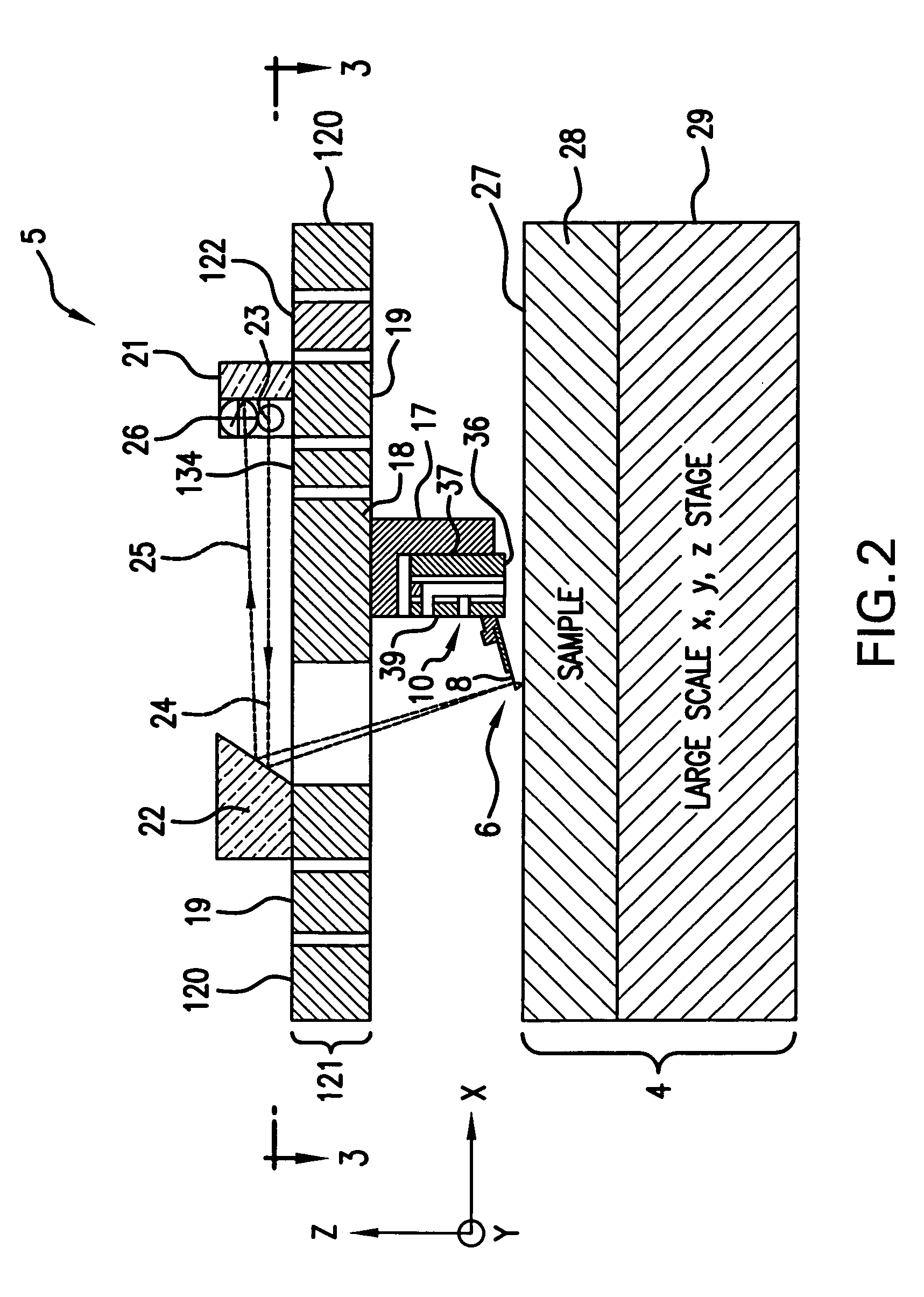Scanning probe microscope using a surface drive actuator to position the scanning tip
a surface drive actuator and scanning probe technology, applied in the direction of material analysis using wave/particle radiation, generators/motors, instruments, etc., can solve the problems of limited scanning speed, limited acceleration available to accelerate the tip, and limitations of the piezoelectric actuator. achieve the effect of improving the state of the ar
- Summary
- Abstract
- Description
- Claims
- Application Information
AI Technical Summary
Benefits of technology
Problems solved by technology
Method used
Image
Examples
embodiment 300
[0067]In some instances, it is desirable to operate Z actuator 10 in a humid or aqueous environment. Water, since it is a polar molecule, tends to shield the electrostatic potentials produced by the stator electrodes 56 and translator electrodes 58 and reduces the forces induced by the Z actuator 10. The embodiment 300 of FIG. 16 circumvents this problem by interposing a layer of dielectric fluid 310 between the translator 34 and stator 36. A suitable dielectric fluid is sold by the 3M company under the trade name FLUORINERT.
Transformer oils are also suitable; one such oil is sold by the Shell Oil Corporation under the trade name DIALA Oil M.
embodiment 350
[0068]A further embodiment 350 for protecting the electrodes from a water environment is shown in FIG. 17. In this case, a hydrophobic dielectric film 355 is coated on parts of the Z actuator 10 exterior to the stator electrodes 56 and translator electrodes 58. Because the gaps between the surfaces are very small, ranging from 100 microns to 1 micron, liquid water cannot traverse these regions and satisfactory operation of the Z actuator is achieved. Furthermore, the principles of isolating the electrodes from an aqueous environment shown in FIGS. 16 and 17 can be equally well applied to the electrostatic surface actuators of FIGS. 12, 14, and 15.
[0069]A method of scanning with a probe tip in accordance with the invention will be described with reference to FIG. 18. The method of scanning a sample uses a surface electrostatic actuator is illustrated in FIG. 18. Initially, at 161, a probe tip and an electrostatic surface actuator comprising a stator and a translator are provided. The...
PUM
| Property | Measurement | Unit |
|---|---|---|
| offset angle | aaaaa | aaaaa |
| displacement | aaaaa | aaaaa |
| angle | aaaaa | aaaaa |
Abstract
Description
Claims
Application Information
 Login to View More
Login to View More - R&D
- Intellectual Property
- Life Sciences
- Materials
- Tech Scout
- Unparalleled Data Quality
- Higher Quality Content
- 60% Fewer Hallucinations
Browse by: Latest US Patents, China's latest patents, Technical Efficacy Thesaurus, Application Domain, Technology Topic, Popular Technical Reports.
© 2025 PatSnap. All rights reserved.Legal|Privacy policy|Modern Slavery Act Transparency Statement|Sitemap|About US| Contact US: help@patsnap.com



